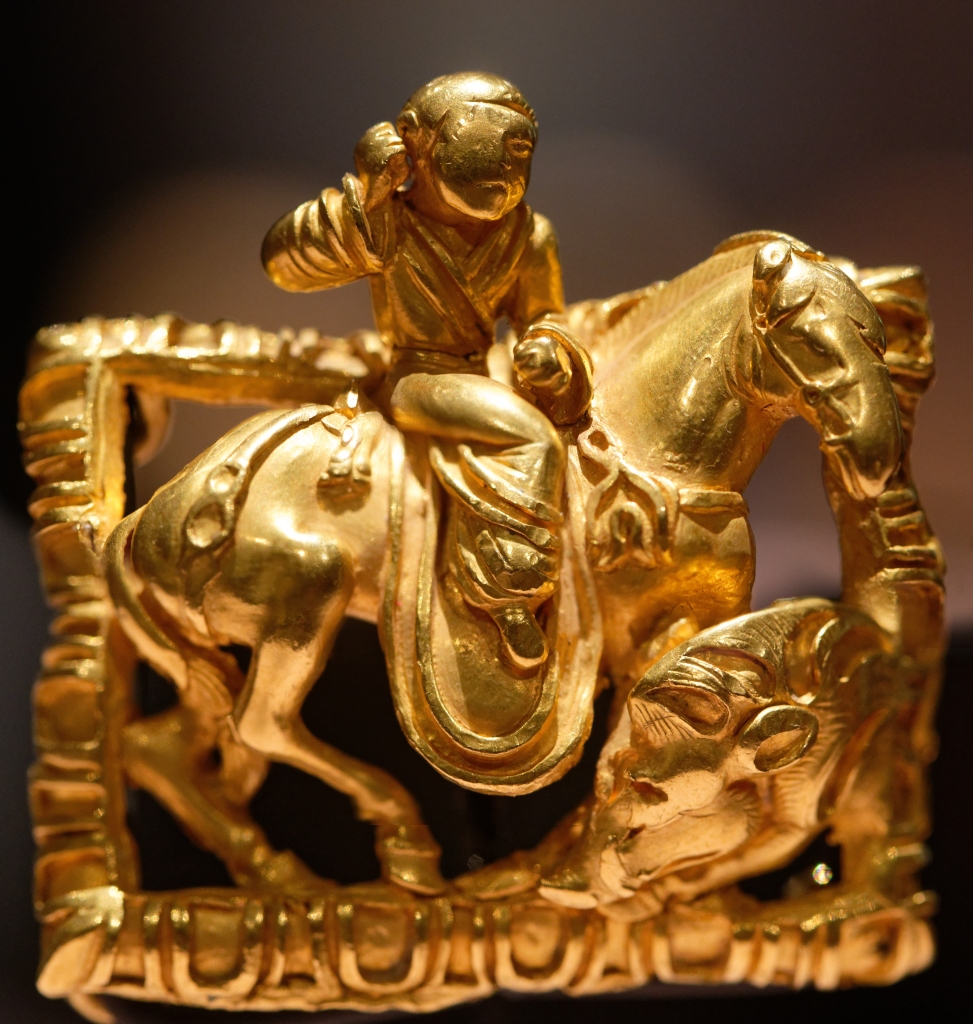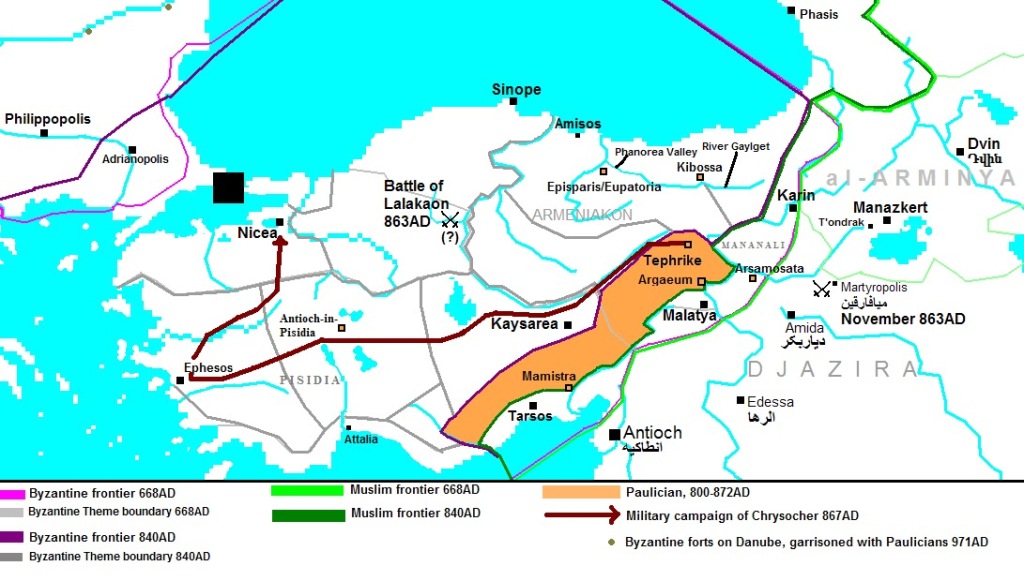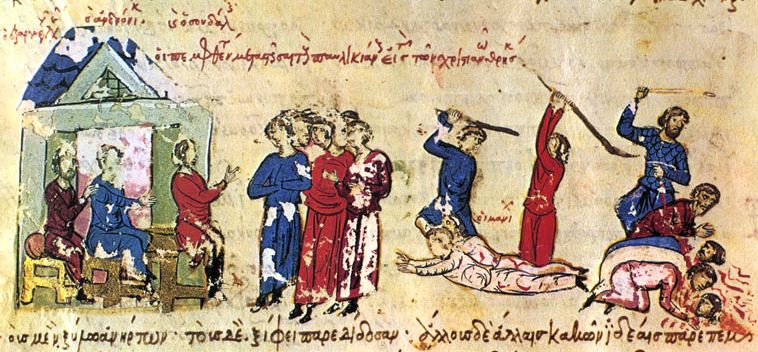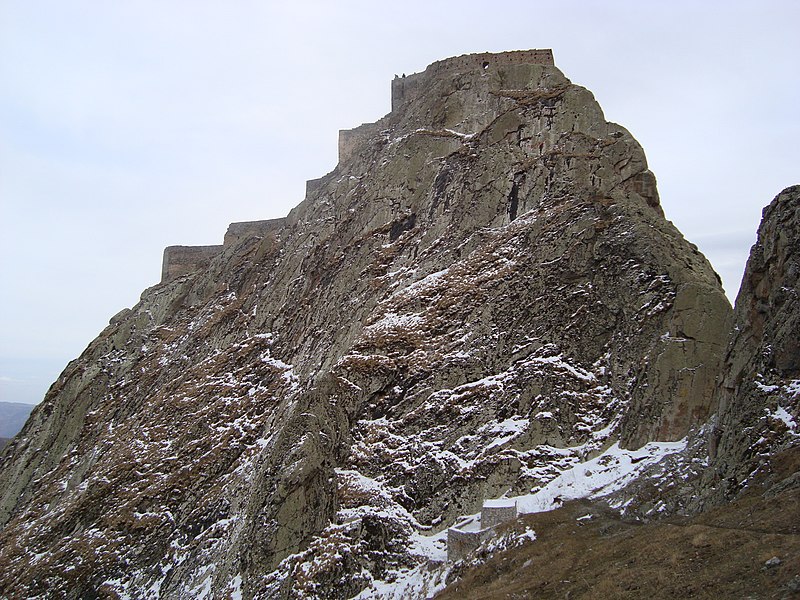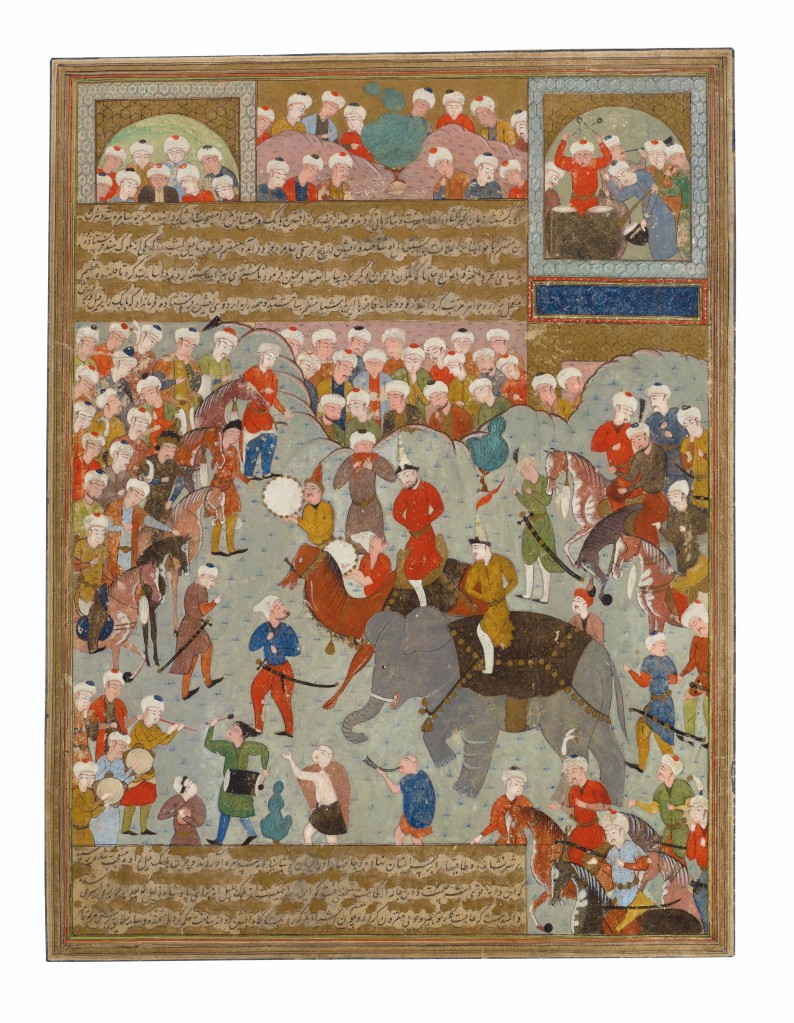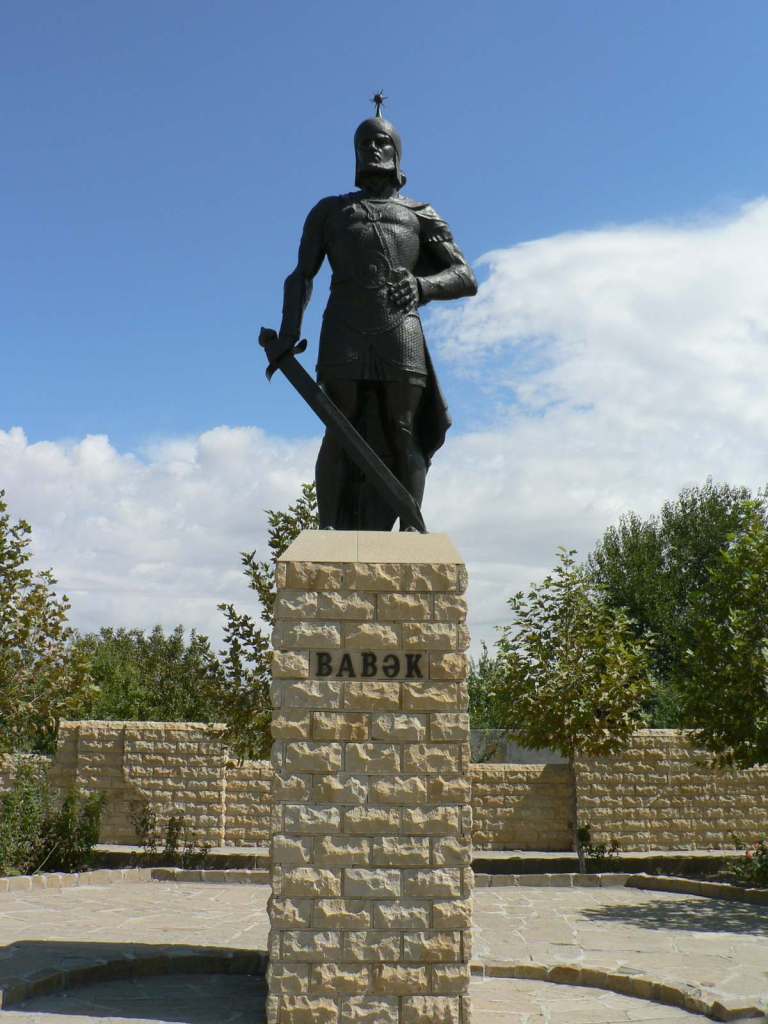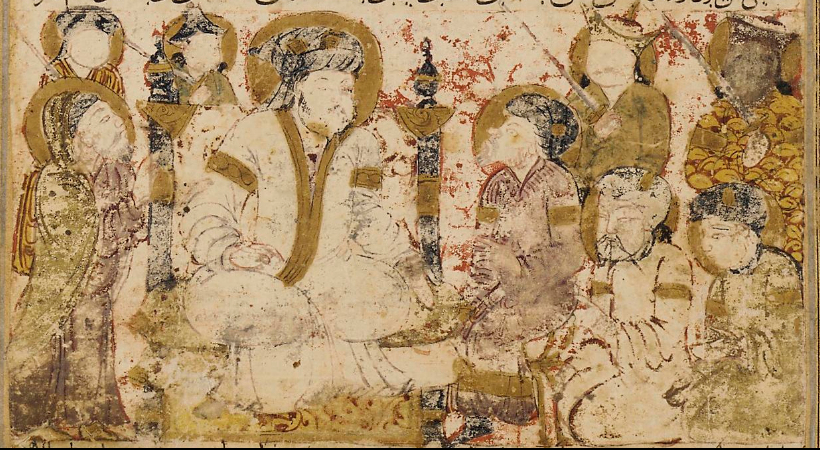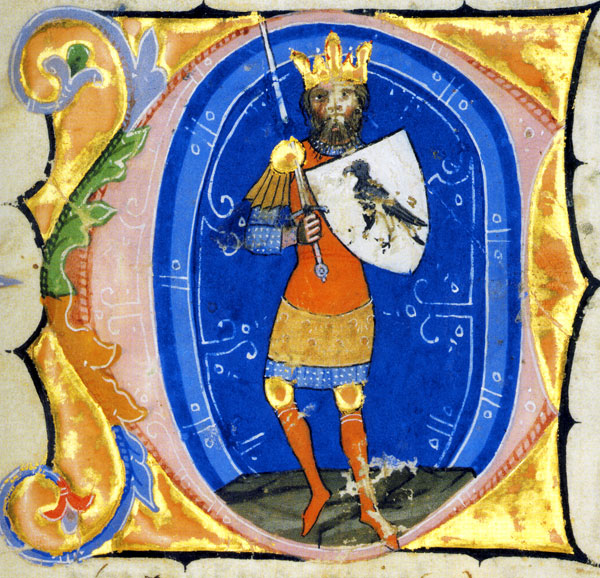What was Ordinary in the Antiquity looks Odd today, due to the Greco-centric Fallacy of the Biased European Colonial ‘Academics’
A while back, I received a brief email from a Bulgarian friend, who urgently asked me to watch a video and comment on the topic. The video offered links to a blog in Bulgarian and to an Austrian site of academic publications. The upsetting affair was the mention of a Bulgarian, or to put it rather correctly of a Bulgarian item or product which was imported in Coptic Egypt. As I understand Bulgarian to some extent, due to my Russian, I read the long presentation of the informative blog, and then replied to my friend. The video was actually a most abridged form of the article posted on the blog of a non-conventional Bulgarian blogger.

Contents
Introduction
I. Fayoum, Al Bahnasa (Oxyrhynchus), and Ancient Egyptian Papyri
II. Karl Wessely and his groundbreaking research and publications
III. Papyrus fragment 1224 of Karl Wessely’s SPP VIII
IV. Βουλγαρικ- (Vulgarik-)
V. Eastern Roman Emperor Maurice’s Strategicon and the Bulgarian cloaks
VI. Historical context and the Ancient History of Bulgars
VII. Historical context, the Silk Roads, and Bulgarian exports to Egypt
VIII. Academic context and the Western falsehood of a Euro-centric World History
i- the conceptualization of World History
ii- the contextualization of every single document newly found here and there
iii- the stages of historical falsification that were undertaken over the past 500 years
iv- the forgers themselves and their antiquity
v- and last but not least, several points of
a) governance of modern states
b) international alliances, and
c) the ensuing captivity of all the targeted nations, each one well-adjusted into the preconceived role that the forgers invented for it
Introduction
What follows is my response on the topic; although it concerns an undeniably very specific affair, it helps greatly in making general readership aware of how deeply interconnected the Ancient World was, of how different it was than it is presented in conventional publications, and of how many layers of fact distortion, source concealment, systematic forgery, academic misinterpretation, and intellectual falsification have been adjusted to what average people worldwide think of as ‘World History’. In brief, the modern Western colonial presentation of World History, which was dictatorially imposed worldwide, is nothing more than a choice-supportive bias and a racist construct. You can also describe it as ‘Hellenism’, Greco-centrism or Euro-centrism.
—————— Response to an inquisitive Bulgarian friend ——————
My dear friend,
Your question and the associated topic are quite complex.
The video that you sent me is extremely brief and almost introductory.
Папирусът от Фаюм
However, in the description, it offers two links.
I read the article in the blog; I noticed that it was published before 12-13 years (13.10.2011). Папирусът (който щеше да бъде) с истинското име на българите?
The author seems to have been taken by surprise due to the Fayoum text, but as you will see, there is no reason for that.
The second link included in the video description offers access to Tyche, an academic annual (Fachzeitschrift) published by the Austrian Institut für Alte Geschichte und Altertumskunde, Papyrologie und Epigraphik der Universität Wien. But this is an introductory web page (https://tyche.univie.ac.at/index.php/tyche) that has links to many publications, which you can download in PDF.
You must not be surprised by such findings; they are old and known to the specialists; there are many Bulgarian professors specializing in Ancient Greek. Some of them surely know about the text. But it is in the nature of the Western sciences that scholars do not write for the general public; it is very different from what happened in the Soviet Union and the other countries of the Socialist bloc. Reversely, all the average bloggers, who find every now and then a historical document known but not publicized, think that they discovered something incredible, but in most of the cases, we don’t have anything to do with an extraordinary discovery. Simply, History has been very different from what average people have been left to believe.
I. Fayoum, Al Bahnasa (Oxyrhynchus), and Ancient Egyptian Papyri
Fayoum by the way is an enormous oasis. It has cities, towns and villages. In our times, it was one of the strongholds of Muslim Brotherhood in Egypt. Former president Muhammad Morsi got ca. 90% of the votes locally. About:
https://en.wikipedia.org/wiki/Faiyum
The discoveries of papyri in Egypt started mainly in the 19th c.; excavators unearthed tons of valuable documentation, unfortunately in fragmentary situation most of them; indicatively:
https://archive.org/details/faymtownsandthe00milngoog
https://archive.org/details/faymtownstheir00gren/page/n9/mode/2up
Such is the vastness of the documentation that either Egyptologists or Coptologists or Hellenists, there are many scholars of those disciplines who specialize in papyri only: the Papyrologists.

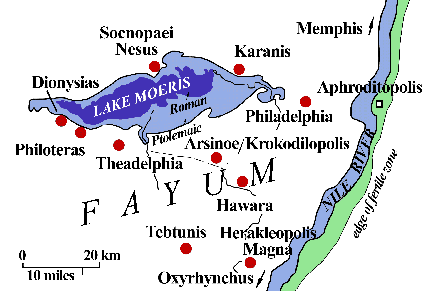
Fayoum map with Ancient Greek names

Fayoum Lake (above) – Wadi El Rayan waterfalls (below)

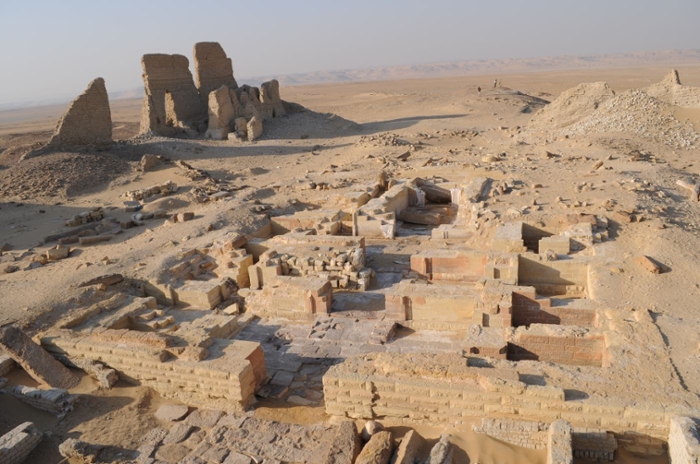
Temple of Soknopaios at Soknopaiou Nesos (Island), Fayoum (viewed from the SE)

Fayoum: a tourist destination
Another major site of papyri discovery is Oxyrhynchus (Ancient Greek name of the Egyptian site Per medjed / Oxyrhynchus is merely the Ancient Greek translation of Per medjed), i.e. the modern city of Al Bahnasa. Indicatively:
https://en.wikipedia.org/wiki/Oxyrhynchus
https://en.wikipedia.org/wiki/Oxyrhynchus_Papyri
To get a minimal idea of the vastness of this field of research, go through the following introductory readings:
Cairo Fayum Papyri: http://ipap.csad.ox.ac.uk/Fayum.html
https://sv.wikipedia.org/wiki/Fayoum_papyri
https://en.wikipedia.org/wiki/Papyrus
https://en.wikipedia.org/wiki/List_of_papyri_from_ancient_Egypt
https://en.wikipedia.org/wiki/Elephantine_papyri_and_ostraca
https://en.wikipedia.org/wiki/Magdalen_papyrus
https://en.wikipedia.org/wiki/Nag_Hammadi_library
https://en.wikipedia.org/wiki/List_of_New_Testament_papyri
II. Karl Wessely and his groundbreaking research and publications
The fragment of papyrus that mentions in Ancient Greek an adjective, which means «Bulgarian» in English, was found in the Fayoum (you can write the word with -u or -ou). It was first published by a great scholar C. (Carl or Karl) Wessely (1860-1931).
https://en.wikipedia.org/wiki/Karl_Wessely
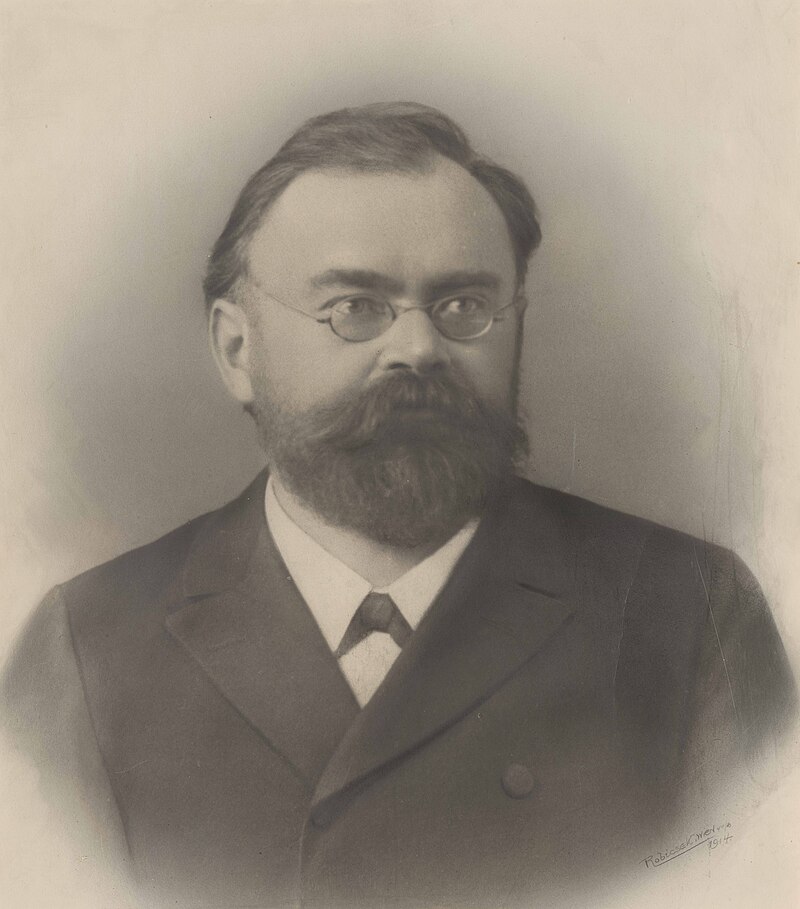
He was one of the 10 most prominent scholars and philologists of the 2nd half of the 19th and the 1st half of the 20th c. He published a voluminous series of firsthand publications of discoveries, which was named Studien zur Paleographie und Papyruskunde (SPP). As you can guess, this took decades to be progressively materialized. Here you have an online list:
https://de.wikisource.org/wiki/Studien_zur_Palaeographie_und_Papyruskunde
Unfortunately, the volume VIII (Leipzig 1908), which is mentioned in the article of the blog, is missing in the wikisource list!
No problem! You can find the PDF in the Internet Archives site. Here is the link:
You will find the text’s first publication on page 189 of the book; this is the page 63 of 186 of the PDF. This means that you will find this indication at the bottom of the PDF: 189 (63 / 186).
This volume, as stated on p. 7, contains «Griechische Papyrusurkunden kleineren Formats», i.e. Greek papyri documents of smaller format. If you find it strange that on the first page of the main text (137 (11 / 186) as per the PDF), the first text has the number 702, please remember that this is an enormous documentation published in the series of volumes (SPP) published by Wessely between 1900 and 1920.
III. Papyrus fragment 1224 of Karl Wessely’s SPP VIII
As you will see, the text slightly differs from what is shown in either the blog article or the video. It is indeed the 1224 papyrus fragment as per the enumeration of the publication. Similarly to many other cases, most of the text is lost; this is quite common. Few things are easy to assess, if you through the entire volume; apparently the background reflects Coptic Egypt, which means that all the texts date between the early 4th and 7th c. CE. This is clearly visible because the dating system is based on indiction, which was a Roman system of periodic taxation and then chronology. About: https://en.wikipedia.org/wiki/Indiction
This Latin word was accepted in Greek: ινδικτιών,
We can also understand that the person, who wrote this specific document, was following (not the Julian calendar but) the Coptic calendar, because on the 8th line the remaining letters αρμουθί (armouthi) help us reconstitute the well-known Coptic month of Pharmouthi (or Parmouti) which corresponds to end March-beginning April (in the Julian calendar) or April and early May in the Gregorian calendar. In Arabic, it is pronounced ‘Bermouda’ (unrelated to the Bermuda islands).
About: https://en.wikipedia.org/wiki/Parmouti
It has to be noted that the pagan Greek calendar was abolished, and that the use of ‘Greek’ (‘Alexandrine Koine, to be correct) in the Fayum papyri texts and elsewhere does not imply ‘ethnic’ membership but rather religious affiliation (in this case, in contrast to Coptic).
About the Coptic calendar:
https://en.wikipedia.org/wiki/Coptic_calendar
https://www.copticchurch.net/calendar
In addition, you can see the first letter of the word «indiction» ι (ι) after Pharmouthi.
Apparently, this papyrus documented a transaction effectuated by a certain Cyril (Cyrillus / Κύριλλος). Only the letters «rill» (ριλλ) are saved, as you can see, but the high frequency of the name among the Copts makes of this word the first choice of any philologist. By the way, the name is still widely used among today’s Copts as «Krulos».
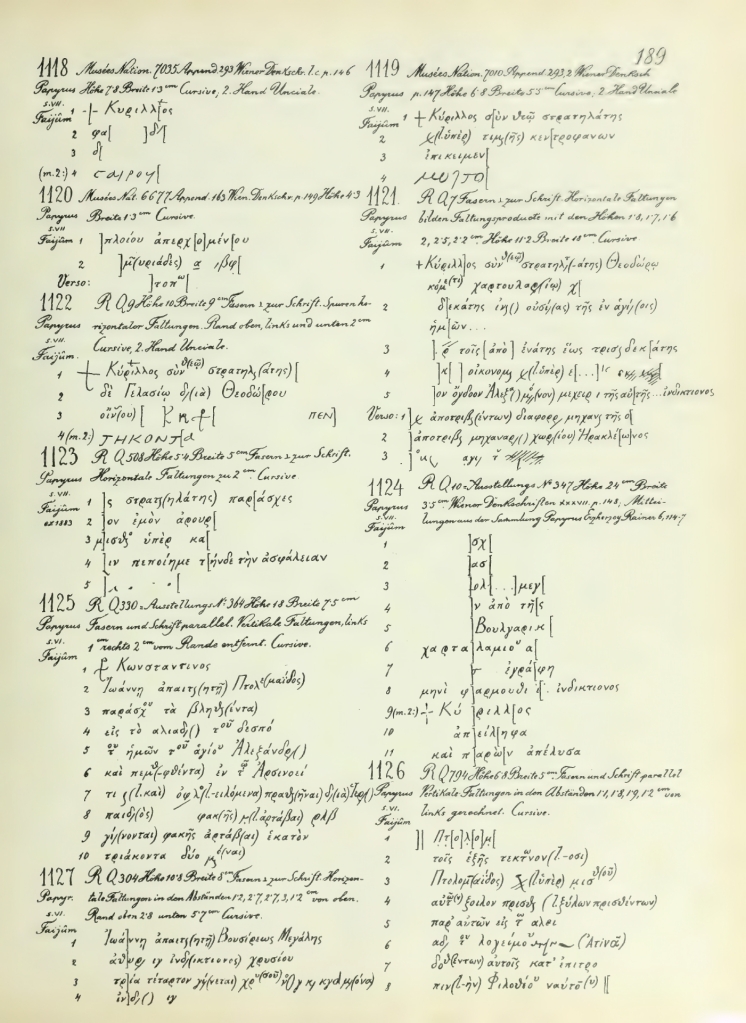
I fully support Wessely’s reconstitution of the document on lines 7, 10 and 11.
Line 7 (εγράφη out of εγρα-), i.e. «it was written»
Line 10 (απείληφα out of -ειλ-), i.e. «I received from»
Line 11 (και παρών απέλυσα out of -αρω-), i.e. «I set free by paying a ransom or I disengaged or I released». Details:

Now comes a thorny issue, because on line 6, Wessely wrote «λαμιο(υ)» (: lamio reconstituted as lamiu), and went on suggesting a unique term «χαρτα-λαμίου» (charta-lamiou). This is not attested in any other source. Λάμιον (lamium) is a genus of several species of plants, whereas Lamios (Λάμιος) is a personal name. About:
http://encyclopaedia.alpinegardensociety.net/plants/Lamium/garganicum
https://en.wikipedia.org/wiki/Lamium
Also: (ἡμι-λάμιον) https://www.perseus.tufts.edu/hopper/text?doc=Perseus%3Atext%3A1999.04.0057%3Aentry%3Dh(mila%2Fmion

But «χαρτα-λαμίου» (in Genitive declension) is a hapax. Still the opinion of the first explorer and publisher is always crucial; but as in many other cases, these people publish such an enormous volume of documentation that they do not have enough time to explain their suggestions and reason about their choices. To them, publishing hitherto unpublished material is undisputedly no 1 priority.
Other scholars attempted a different approach; they hypothetically added «υιός» (yios), i.e. «son», before λαμίου (Lamiou)
Personally, I find it highly unlikely. First, I most of the times support the first explorer’s / publisher’s approach.
Second, I believe that those, who add «υιός» (yios), i.e. «son» on line 6, are forced to reconstitute Βουλγαρικ̣[ὸς on line 5. This is most probably wrong.
But Wessely did not attempt something like that, preferring to leave the only saved word on line 5 as it is «Βουλγαρικ̣».
Now, what stands on lines 1 to 4 is really too minimal to allow any specialist to postulate or speculate anything. Perhaps there was something «big» mentioned on line 3 («-μεγ-»/«-meg-»), but this is only an assumption. Also, on line 4, we read that something (or someone) was (or was sent or was bought) from somewhere, because of the words «από της» (apo tis), i.e. «from the» (in this case, «the» being the feminine form of the article in Genitive declension).
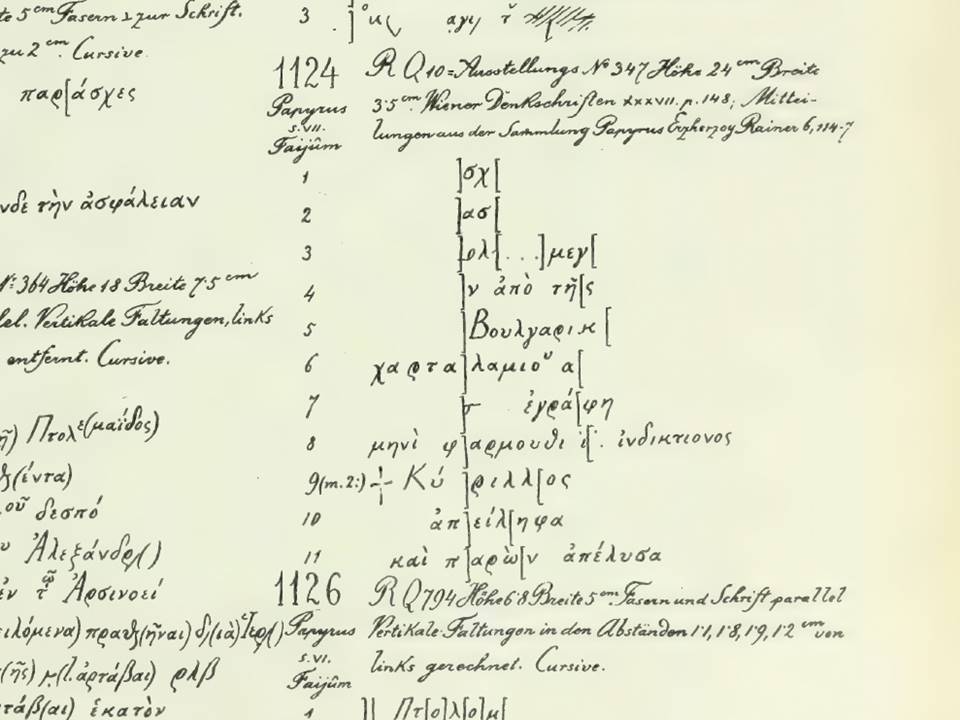
IV. Βουλγαρικ- (Vulgarik-)
Now, and this is the most important statement that can be made as regards this fragment of papyrus, the word that stands on line 5 is undoubtedly an adjective, not a substantive! This is very clear. This means that the word is not an ethnonym. In English, you use the word «Bulgarian», either you mean a Bulgarian man (in this case, it is a noun) or a Bulgarian wine (on this occasion, it is an adjective). Bulgarian is at the same time a proper noun and an adjective in English.
However, in Greek, there is a difference when it comes to names of countries and nations. When it is a proper noun (substantive), you say «Anglos» (Άγγλος), «Sikelos» (Σικελός), «Aigyptios» (Αιγύπτιος), etc. for Englishman, Sicilian man, Egyptian man, etc. But you say «anglikos» (αγγλικός), «sikelikos» (σικελικός), «aigyptiakos» (αιγυπτιακός), etc. for adjectives of masculine gender.
Discussing the word attested on line 5 of the papyrus fragment 1224 of Karl Wessely’s SPP VIII, I have to point out that in Ancient ‘Greek’ and in Alexandrine Koine, there is a vast difference between Βούλγαρος (Vulgaros) and βουλγαρικός (vulgarikos).
The first denotes a Bulgarian national, someone belonging to the ethnic group / nation of Bulgars and/or Bulgarians. At this point, I have to also add that these two words in English are a modern academic convention to distinguish Proto-Bulgarians (Bulgars) from the Bulgarians, who settled in the Balkan Peninsula. However, this distinction did not exist in Late Antiquity Greek texts and in Eastern Roman texts.
The second is merely an adjective: βουλγαρικός (vulgarikos), βουλγαρική (vulgariki), βουλγαρικόν (vulgarikon) are the three gender forms of the adjective: masculine, feminine and neutral.
So, as the preserved part of the word being «βουλγαρικ-» (vulgarik-), we can be absolutely sure that the papyrus text mentioned a Bulgarian item (a product typical of Bulgars or an imported object manufactured by Bulgars) — not a Bulgarian man.
All the same, it makes sure the following points:
a. in 4th-7th c. CE Egypt, people imported products that were manufactured by Bulgars in their own land (Bulgaria).
b. since the products were known, imported and listed as «Bulgar/Bulgarian», people knew the nation, which manufactured them, and its location.
c. considering the magnitude of the documentation that went lost, we can safely claim that there was nothing extraordinary in the arrival of Bulgar/Bulgarian products in in 4th-7th c. CE Egypt.
d. the papyrus in question presents the transaction in terms of «business as usual».
This is all that can be said about the papyrus text, but here ends the approach of the philologist and starts the viewpoint of the historian. However, before presenting the historical context of the transaction recorded in the fragmentarily saved papyrus from Fayoum, I have to also discuss another issue, which was mentioned in the blogger’s interesting discussion.
V. Eastern Roman Emperor Maurice’s Strategicon and the Bulgarian cloaks
Of course, as anyone could expect, several historians and philologists would try to find parallels to the mention of Bulgarian imports made in this papyrus fragment.
And they did. In his presentation, the blogger already mentioned several academic efforts. So, the following paragraphs, which are to be found almost in the middle of the article (immediately after the picture), refer to two scholarly efforts to establish parallels:
«Публикуван е за пръв път от SPP VIII 1124, Wessely, C., Leipzig 1908 и по – късно препубликуван от Diethart, в публикация с многозначителното заглавие „Bulgaren“ und „Hunnen“, S. 11 – 1921. Въпреки това папирусът не стига много бързо до родна публика.
“По пътя” един учен, Моравчик, стига и по – далеч при превода. Той разчита в откъсите и думата “Пояс” и включва в теорията ново сведение(Mauricii Artis mllltaris libri duodecim, Xll (ed. Scheffer), p. 303) , където се казва, че пехотинците трябвало да носят “ζωναρία bм λιτά, xal βουλγαρική cay ία” – т.е. смята, че става дума за носен в Египет от военните “български пояс”(сведенията за публикациите дотук са по Иван Костадинов).
Вдясно виждате лична снимка. Коптска носия от 4-ти век н.е. Пази се в етнографския музей на александрийската библиотека. По необходимост за пустинния климат е от лен. Оттам вече аналогиите оставям изцяло на вас.
Папирусът “идва в България” късно. По спомени казвам ,че мисля, че първият публикувал го е доста уважаваният Иван Дуриданов, който с радост представя на българската публика вече 4 деситилетия предъвкваният от западната лингвистика български папирус. Той публикува радостна статия, с която приветства откритието».
Certainly, Gyula Moravcsik (1892-1972) and Johannes Diethart (born in 1942) proved to be great scholars indeed. About:
https://en.wikipedia.org/wiki/Gyula_Moravcsik
https://de.wikipedia.org/wiki/Johannes_Diethart
The adjective Vulgarikos, -i, -on («Bulgarian» in three genders) is attested in a famous Eastern Roman text, which is rather known under the title «Maurice’s Strategicon»; this was a handbook of military sciences and a guide to techniques, methods and practices employed by the Eastern Roman army. It was written by Emperor Maurice (Μαυρίκιος- Mauricius /reigned: 582-602) or composed according to his orders. About:
https://en.wikipedia.org/wiki/Maurice_(emperor)
https://en.wikipedia.org/wiki/Strategikon_of_Maurice
I did not read Moravcsik’s article, but I read the Strategicon; it does not speak of «Bulgarian belts», but of «Bulgarian cloaks». In this regard, the blogger mentions a very old edition of the text, namely Mauricii Artis mllltaris libri duodecim, Xll (ed. Scheffer), p. 303). This dates back to 1664:
At those days, all Western European editions of Ancient Greek texts involved Latin translations. Scheffer’s edition of the Strategicon can be found here:
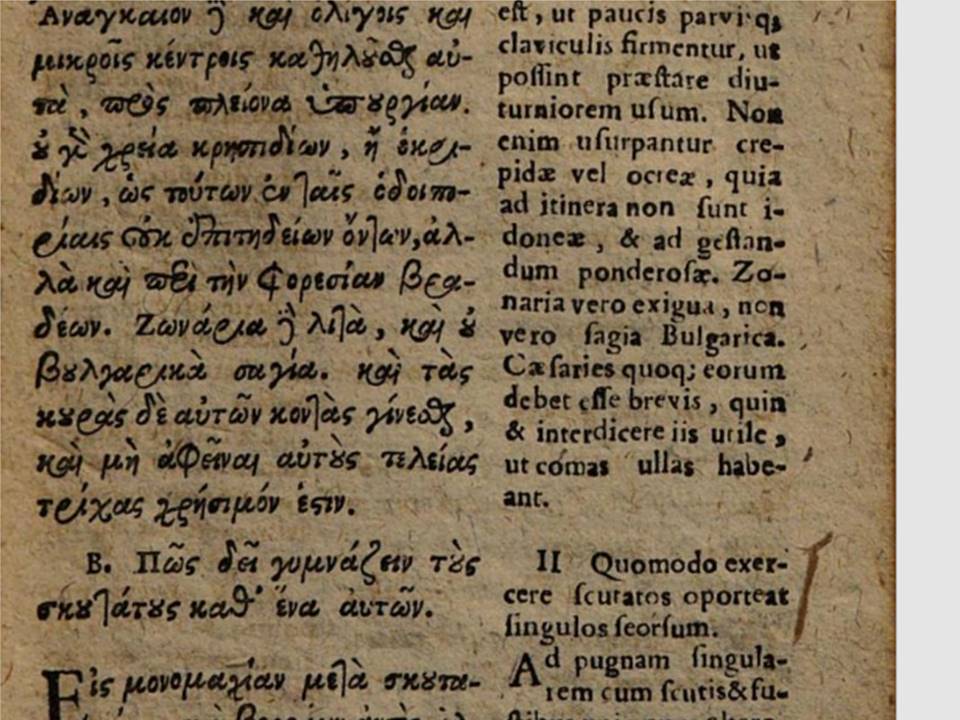
George T. Dennis’ translation (1984) makes the text accessible to English readers:
In the 12th chapter, which is the last of the Strategicon, under the title “Mixed Formations, Infantry, Camps and Hunting”, in part I (Clothing to be Worn by the Infantry), on page 138 (University of Pennsylvania Press), the word σαγίον (sagion) is very correctly translated as “cloak”. The author refers to “βουλγαρικά σαγία” (Latin: sagia Bulgarica) in plural; this is rendered in English “Bulgarian cloaks”, which are thought to be very heavy. Already, the word σαγίον (sagion) is of Latin etymology. About:
https://www.perseus.tufts.edu/hopper/text?doc=Perseus%3Atext%3A1999.04.0057%3Aentry%3Dsagi%2Fon
and https://www.oxfordreference.com/display/10.1093/oi/authority.20110803100436640
Also: https://greek_greek.en-academic.com/151302/σαγίον
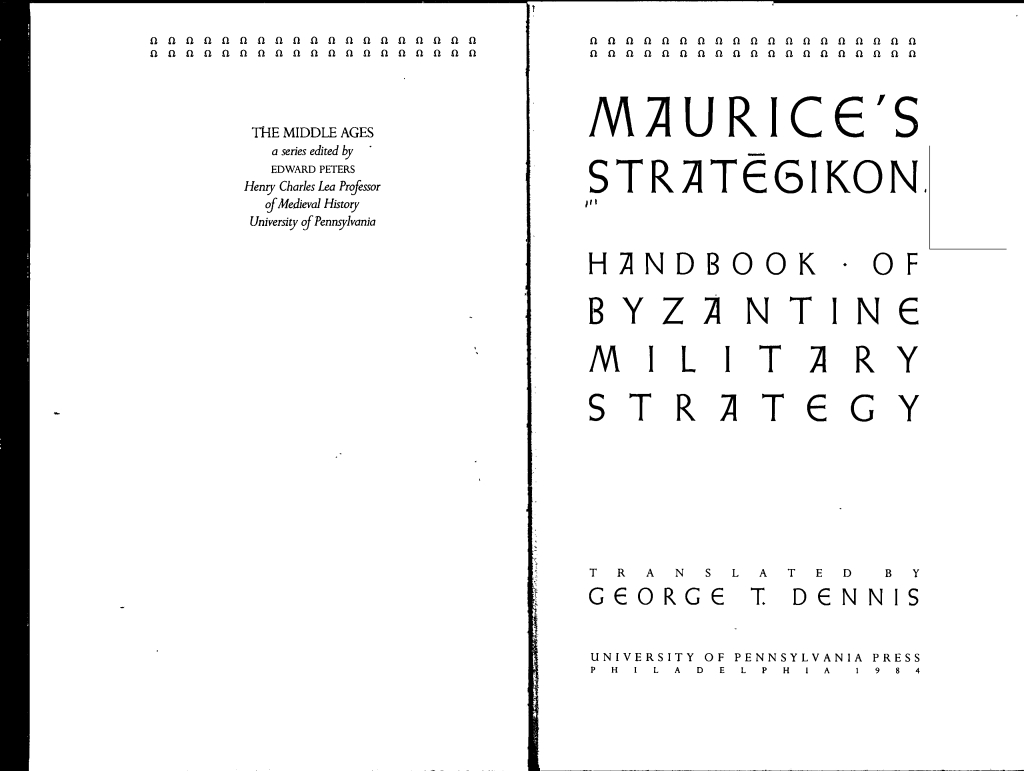
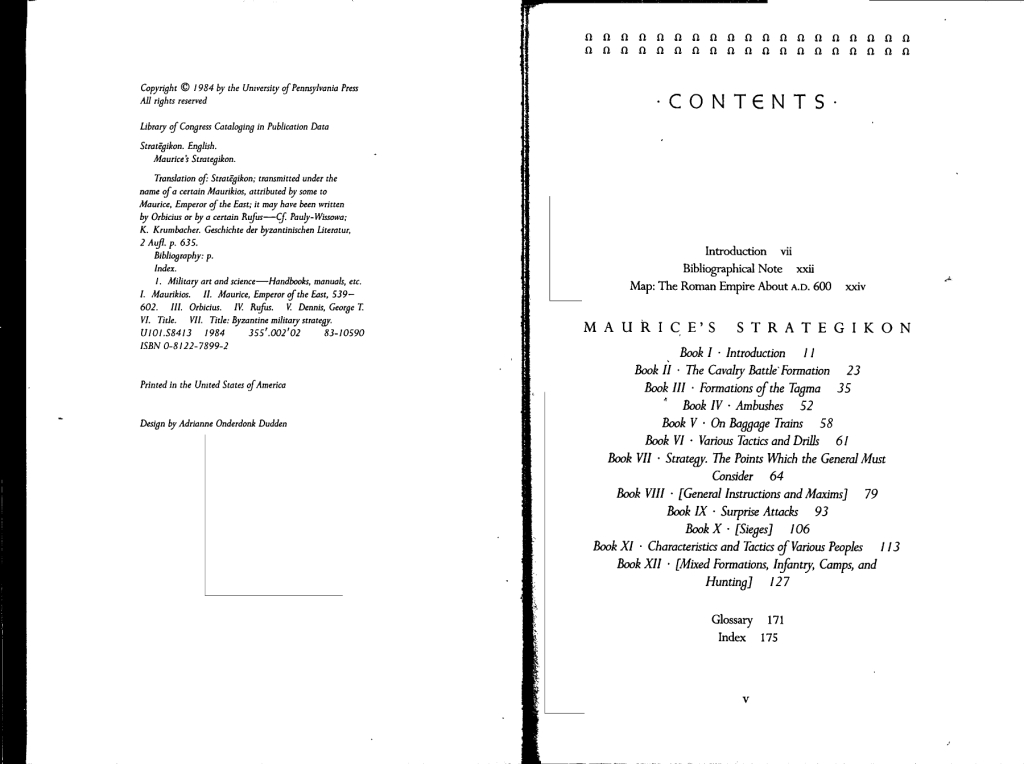
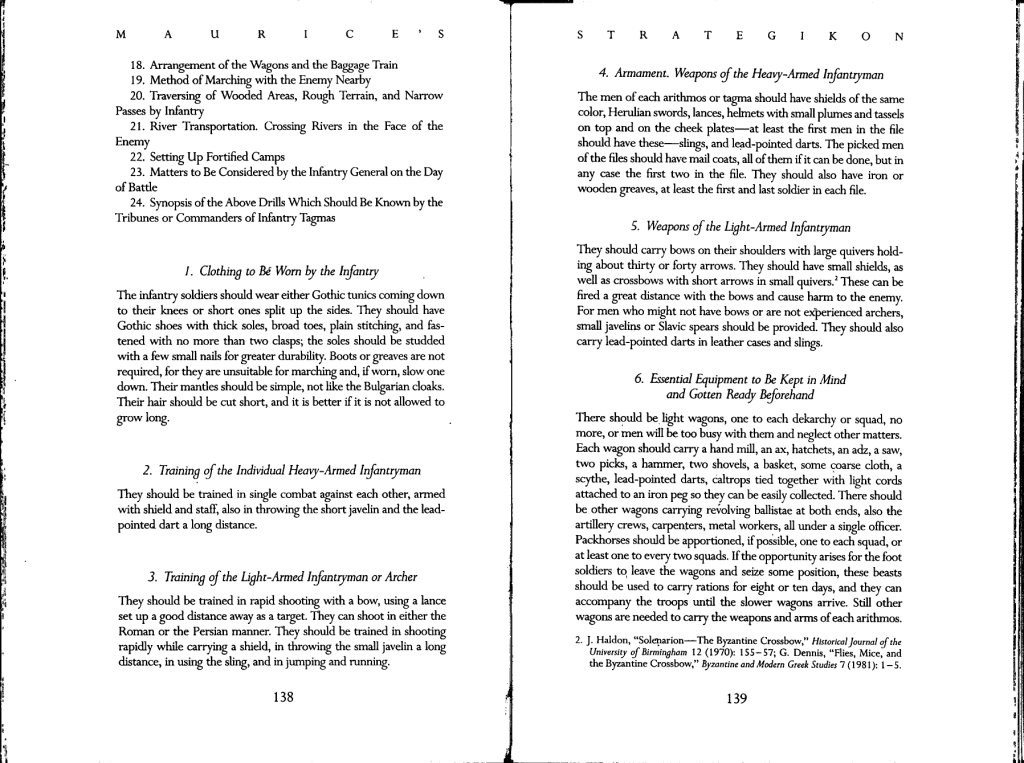
In that period and for more than 1000 years, what people now erroneously call «Medieval Greek» or «Byzantine Greek» (which in reality is «Eastern Roman») was an amalgamation of Alexandrine Koine and Latin. There were an enormous number of Latin words written in Greek characters and in Alexandrine Koine form. Indicatively: https://en.wikipedia.org/wiki/Koine_Greek
At this point, I complete my philological commentary on the topic. I read the Strategicon of Emperor Maurice when I was student in Athens in the middle 1970s.
I did not remember the mention of Bulgarian cloaks, but I know however that the Bulgars, who founded the Old Great Bulgaria, appear in Eastern Roman texts at least 100 years before the purported establishment and growth of that state (632–668). The academic chronology for the First Bulgarian Empire may be correct (681–1018), but the dates given for the Old Great Bulgaria and the Volga Bulgaria (late 7th c.–1240s) are deliberately false. General info:
https://en.wikipedia.org/wiki/Old_Great_Bulgaria and https://en.wikipedia.org/wiki/First_Bulgarian_Empire
https://en.wikipedia.org/wiki/Volga_Bulgaria and https://en.wikipedia.org/wiki/Bulgars#Etymology_and_origin
VI. Historical context and the Ancient History of Bulgars
It is now time for me to briefly discuss the historical context within which the aforementioned topics took place. Let’s first ask some questions:
Is it strange that a Fayoum papyrus of the 3rd-7th c. CE mentions Bulgarian products that arrived in Egypt?
Is it odd that in Emperor Maurice’s Strategicon we find a mention of Bulgarian cloaks used or not used by the Eastern Roman army?
In both cases, the response is «no»!
From where did these Bulgarian products come?
Where did Bulgars (or Bulgarians) live at the time?
My personal response is somehow vague: they came from some regions of today’s Russia’s European soil, either in the southern confines (the Azov Sea, the northern coast of the Black Sea, and the North Caucasus region) or in the area of today’s Tatarstan and other lands north-northeast of the Caspian Sea.
It is not easy to designate one specific location in this regard, and this is so for one extra reason: it seems that there were several tribes named with the same name, and they were distinguished among themselves on the basis of earlier tribal affiliations, which may go back to the Rouran Khaganate (330-555 CE). There are actually plenty of names associated with the early Bulgars, notably the Onogurs, the Kutrigurs, etc. About:
https://en.wikipedia.org/wiki/Kutrigurs
https://en.wikipedia.org/wiki/Onogurs
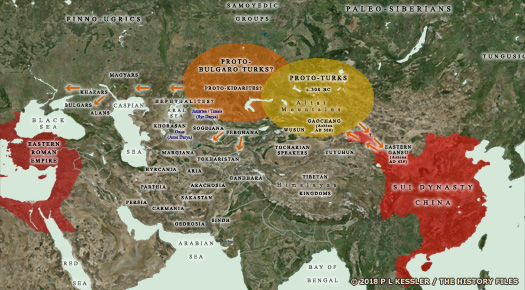
Central Asia ca. 300 CE
Many readers may be taken by surprise because I go back easily from the time of the Old Great Bulgaria (630-668 CE) to that of the Rouran Khaganate and the Huns. All the same, there is no surprise involved in this regard. Western European historians deliberately, systematically and customarily underestimate across the board the value of Oral History and attempt to dissociate Ethnography from History; these approaches are wrong. It is quite possible that, from the very beginning of the establishment of Rouran Khaganate, many tribes, clans or families (which later became nations) started migrating. The very first Bulgars (Bulgarians) may have reached areas north of the Iranian borders in Central Asia or in Northern Caucasus much earlier than it is generally thought among Western scholars. See indicatively:
https://en.wikipedia.org/wiki/Rouran_Khaganate
https://en.wikipedia.org/wiki/G%C3%B6kt%C3%BCrks
https://en.wikipedia.org/wiki/First_Turkic_Khaganate
https://en.wikipedia.org/wiki/Western_Turkic_Khaganate
https://en.wikipedia.org/wiki/Old_Great_Bulgaria
https://en.wikipedia.org/wiki/Kubrat
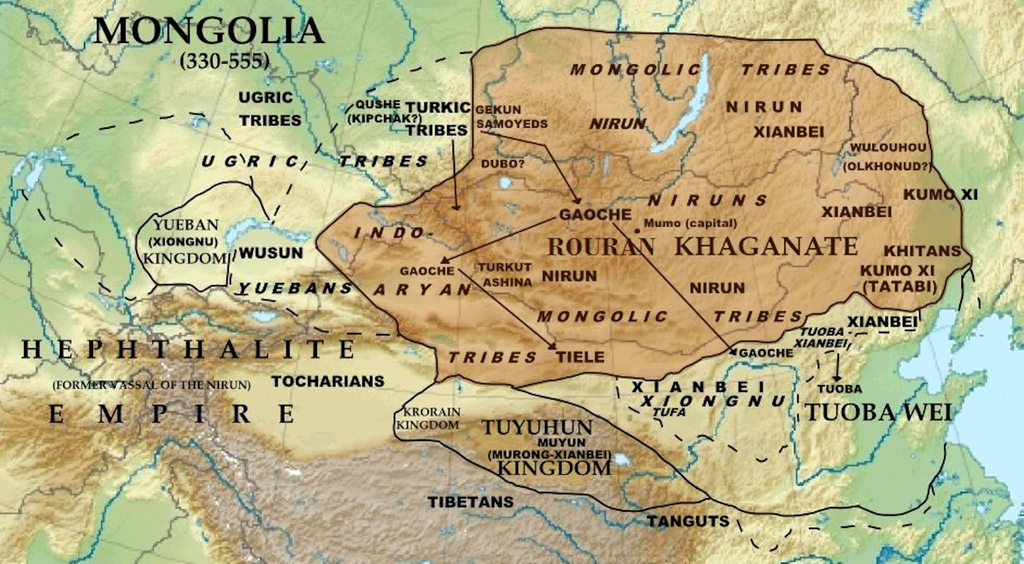

Great Old Bulgaria
Now, the reasons for which I intentionally date the first potential interaction of Bulgars/Bulgarians with other tribes (or nations) in earlier periods are not a matter of personal preference or obstinacy. There is an important historical text named «Nominalia of the Bulgarian Khans». It has not been duly comprehended let alone interpreted thus far. About:
https://en.wikipedia.org/wiki/Nominalia_of_the_Bulgarian_Khans
https://web.archive.org/web/20120204205748/http://theo.inrne.bas.bg/~dtrif/abv/imenik_e.htm
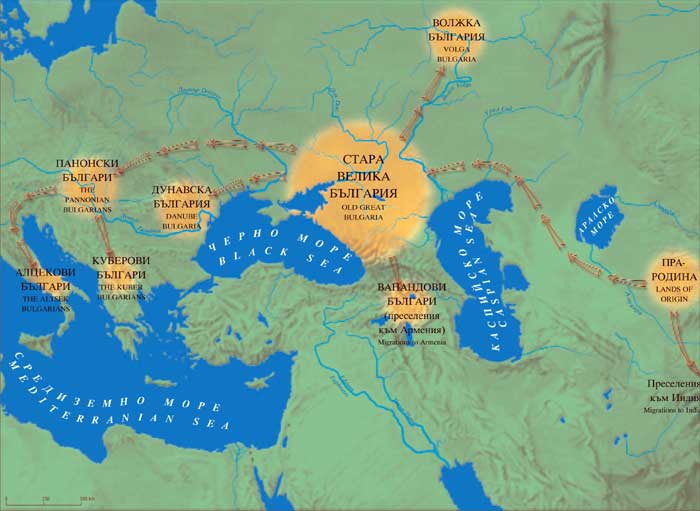
From the Great Old Bulgaria to the beginnings of Volga Bulgaria
Three Russian copies of the text have been saved (in Church Slavonic); they date back to the 15th and 16th c. They are generally viewed as later copies of a potential Old Bulgarian text of the 9th c. Other specialists also pretend that there may/might have been an even earlier text, in either Eastern Roman («Medieval Greek») or Bulgar, which was eventually a stone inscription.
In this document, the highly honorific title «Knyaz» (Князь) is given to Asparuh (ca. 640-700) and to his five predecessors. I must add that the said document was always an intriguing historical source for me due to two bizarre particularities to which I don’t think that any scholar or specialist gave due attention, deep investigation, and persuasive interpretation.
First, the antiquity of the document is underscored by the fact that the early Bulgar calendar, which is attested in this text, appears to be an adaptation of the Chinese calendar. This fact means that the primeval Bulgars, when located somewhere in Eastern Siberia or Mongolia, must have had dense contacts with the Chinese scribal and imperial establishment; perhaps this fact displeased other Turanian-Mongolian tribes of the Rouran Khaganate and contributed to the emigration of those «Ur-Bulgaren». The next point is however more impactful on our approach to the very early phase of the Bulgars.
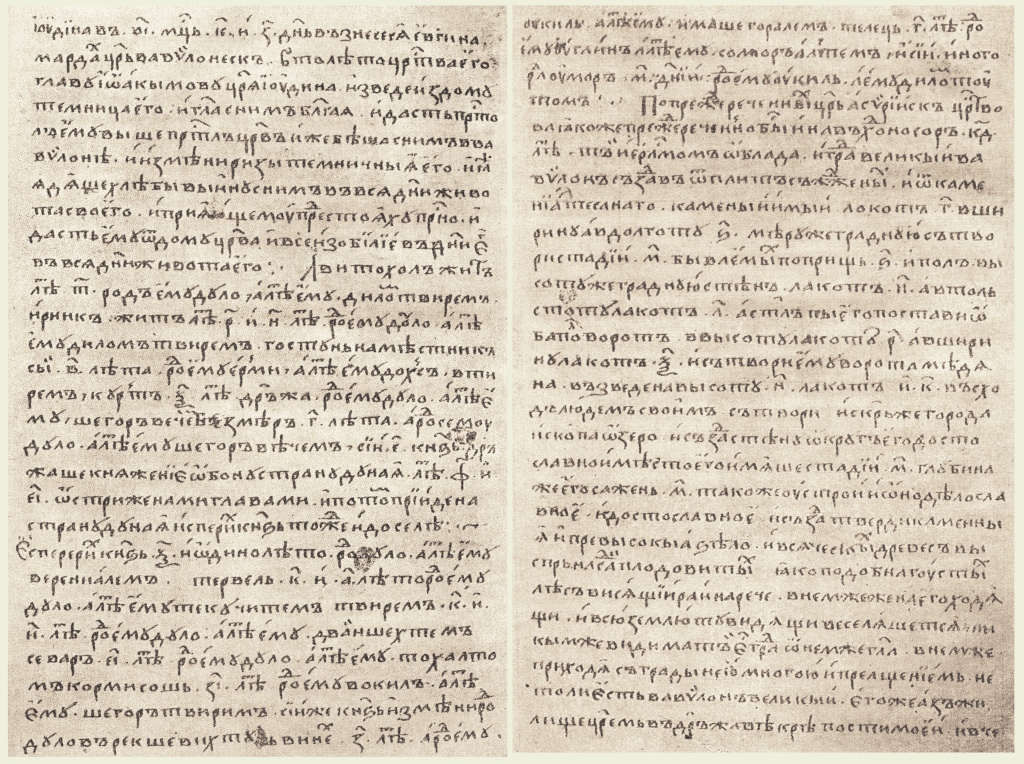
Petrograd manuscript of Nominalia
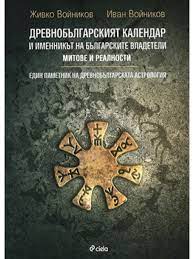
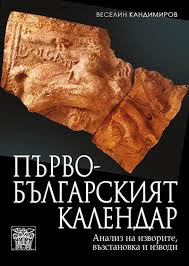
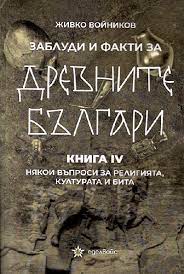
The Old Bulgarian calendar and the Nominalia of the Bulgarian khans
Second, although for most of the rulers immortalized in the historical document, the duration of their lifetimes or tenures are of entirely historical nature (involving brief or long periods of 5 up to 60 years of reign or lifetime), the two first names of rulers are credited with incredibly long lifetimes. This is not common; actually, it does not look sensible; but it is meaningful.
More specifically, Avitohol is said to have lived 300 years, whereas Irnik is credited with 150 years. But we know who Irnik was! Irnik or Ernak was the 3rd son of Attila and he is said to have been his most beloved offspring. Scholars fix the beginning of his reign in 437 CE, but this is still not the important point. The crucial issue with the partly «mythical» and partly historical nature of the text «Nominalia of the Bulgarian Khans» is the fact that the two early rulers, whom the Bulgarians considered as their original ancestors, are credited with extraordinarily long and physically impossible lives. General reading:
https://en.wikipedia.org/wiki/Avitohol
https://en.wikipedia.org/wiki/Ernak
https://en.wikipedia.org/wiki/Huns
https://en.wikipedia.org/wiki/Origin_of_the_Huns
This can therefore imply only one thing: at a later period, when the earlier memories were partly lost for various reasons, eventually because of the new environment namely the Balkan Peninsula, in which the then Bulgars were finding themselves, Avitohol and Irnik were retained as the leading figures of ruling families, and not as independent rulers. Consequently, the dates given for their lives were in fact those of their respective dynasties. It was then that the very early period of Bulgar History was mythicized for statecraft purposes, mystified to all, and sanctified in the national consciousness.
Many Western scholars attempted to identify Avitohol with Attila, but in vain; I don’t think that this attempt can be maintained. So, I believe that the Bulgars were one of the noble families of the Huns (evidently involving intermarriage with Attila himself), and that before Attila, the very earliest Bulgars were ruled by another dynasty which had lasted 300 years. But if it is so, we go back to the times of the Roman Emperor Trajan (reign: 98-117 CE), Vologases III of Arsacid Parthia (110–147 CE) and the illustrious Chinese general, explorer and diplomat Ban Chao (32-102 CE) of the Eastern Han dynasty. About:
https://en.wikipedia.org/wiki/Vologases_III_of_Parthia
https://en.wikipedia.org/wiki/Ban_Chao
https://en.wikipedia.org/wiki/Trajan
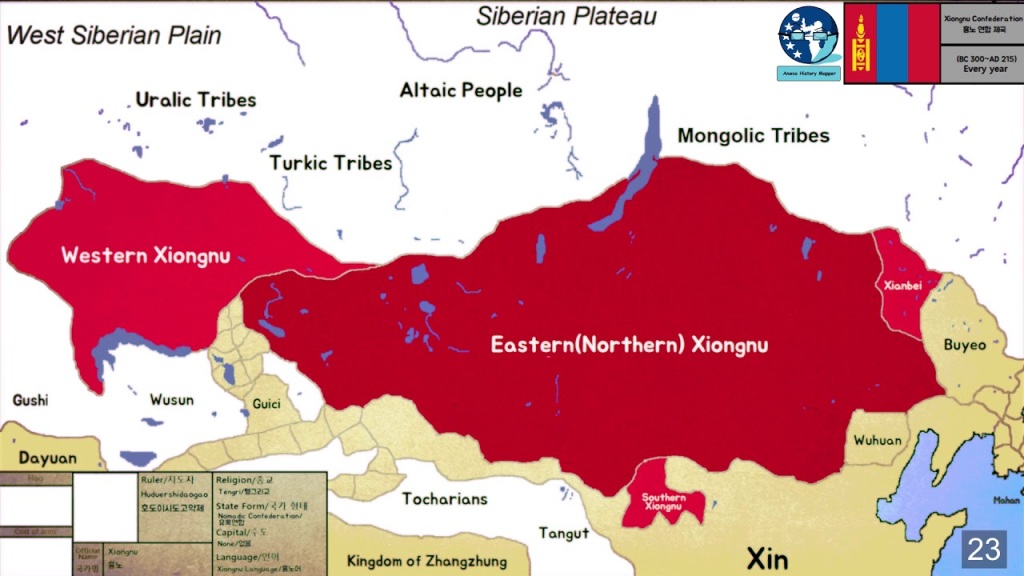
The latter fought for 30 years against the Xiongnu (Hiung-nu/匈奴, i.e. the earliest tribes of the Huns, consolidated the Chinese control throughout the Tarim Basin region (today’s Eastern Turkestan or Xinjiang), and was appointed Protector General of the Western Regions. He is very famous for having dispatched Gan Ying, an envoy, to the West in 97 CE. According to the Book of the Later Han (Hou Hanshu/後漢書), which was compiled in the 5th c. CE by Fan Ye, Gan Ying reached Parthia (Arsacid Iran; in Chinese: Anxi, 安息) and gave the first Chinese account of the Western confines of Asia and of the Roman Empire. About:
https://tr.wikipedia.org/wiki/Hiung-nu
https://en.wikipedia.org/wiki/Xiongnu
https://en.wikipedia.org/wiki/Gan_Ying
https://en.wikipedia.org/wiki/Book_of_the_Later_Han
It is n this historical environment that we have to place the very early ancestors of the Bulgars.
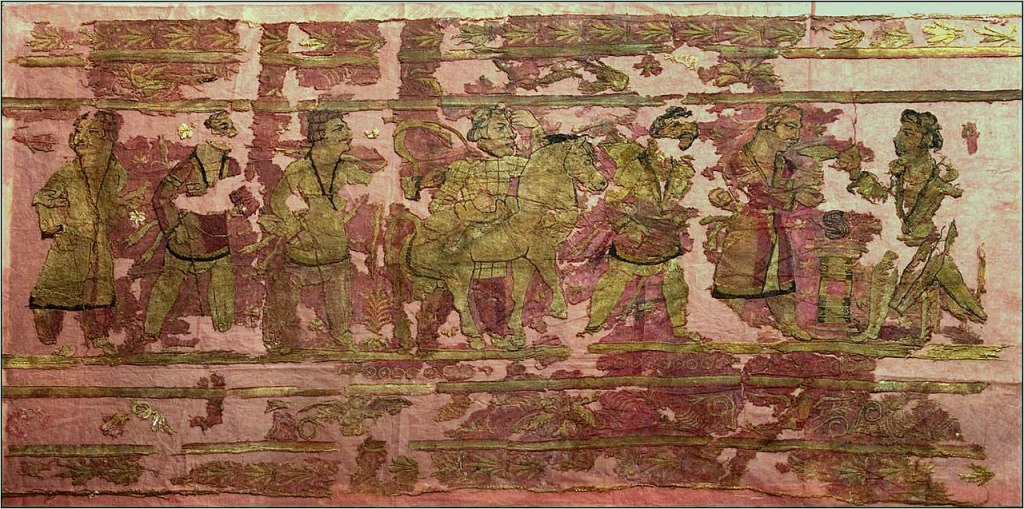
Noin-Ula carpet, embroidered rug imported from Bactria and representing Yuezhi
VII. Historical context, the Silk Roads, and Bulgarian exports to Egypt
Consequently, I believe that it is more probable that the Bulgarian products of those days were first appreciated by the Iranians and later sold to Aramaeans, Armenians, Iberians and other nations settled in the western confines of the Arsacid (250 BCE-224 CE) and the Sassanid (224-651 CE) empires, i.e. in Mesopotamia and Syria, and thence they became finally known in Egypt as well.
The incessant migrations from NE Asia to Central Europe and to Africa, as a major historical event, were not separate from the ‘Silk Roads’; they were part, consequence or side-effect of that, older and wider, phenomenon. Actually, the term ‘Silk Roads’ is at the same time inaccurate and partly; the magnificent phenomenon of commercial, cultural and spiritual inter-exchanges, which took place due to the establishment (by the Achaemenid Shah Darius I the Great) of a comprehensive network of numerous older regional trade routes, is to be properly described as ‘silk-, spice-, and perfume-trade routes across lands, deserts and seas’. About: https://silkroadtexts.wordpress.com/
It has to be said that, after the Achaemenid Iranian invasion, annexation and occupation of Egypt, Sudan and NE Libya (525-404 BCE and 343-332 BCE), Iranian settlers remained in Egypt; they were known to and mentioned by the Macedonian settlers, who manned the Macedonian dynasty of Ptolemies (323-30 BCE). General info: https://en.wikipedia.org/wiki/First_Achaemenid_conquest_of_Egypt
https://en.wikipedia.org/wiki/Second_Achaemenid_conquest_of_Egypt
https://en.wikipedia.org/wiki/History_of_Persian_Egypt
https://en.wikipedia.org/wiki/Twenty-seventh_Dynasty_of_Egypt
https://en.wikipedia.org/wiki/Thirty-first_Dynasty_of_Egypt
Those Iranian settlers were called ‘Persai (ek) tis epigonis’ (Πέρσαι τῆς ἐπιγονῆς), lit. ‘Iranian settlers’ descendants’. About:
Pieter W. Pestman, A proposito dei documenti di Pathyris II Πέρσαι τῆς ἐπιγονῆς
https://www.jstor.org/stable/41215889
Xin Dai, Ethnicity Designation in Ptolemaic Egypt https://www.researchgate.net/publication/329265278_Ethnicity_Designation_in_Ptolemaic_Egypt
https://elephantine.smb.museum/project/work.php?w=H9YQWMB5
See a text from the time of the Roman Emperor Domitian (reign: 81-96) here: https://papyri.info/ddbdp/p.athen;;23
See another text from the time of the Roman Emperor Nerva (reign: 96-98) here:
https://papyri.info/ddbdp/p.ryl;2;173A
There were also in Egypt Jewish Aramaean descendants of the early Iranian settlers: “οἱ τρ(ε)ῖς | Ἰουδαῖοι Πέρσαι τῆς ἐπιγονῆς τῶν [ἀ]πὸ Σύρων κώ- | μης” (lit. Jewish Iranians, who were the descendants of an Aramaean town) – From: Database of Military Inscriptions and Papyri of Early Roman Palestine https://armyofromanpalestine.com/0140-2
Please note in this regard that the title given to the web page and the document is very wrong and extremely biased: “§140 Loan between Jews and Lucius Vettius”; the three persons who received the loan were not ethnic Jews. Their religion was surely Judaism, as it was the case of the renowned Samaritan woman with whom Jesus spoke according to the Gospels. Several other nations accepted Judaism, notably Aramaeans in Palestine, Syria and Mesopotamia (they were called ‘Syrians’ by the Macedonians and the Romans). It is well known that there were many clashes and strives between them and the ethnic Jews. The latter were few and lived either in Jerusalem (and its suburbs) or in Egypt (in Alexandria and many other locations) or in the centers of Talmudic academies in Mesopotamia (namely Nehardea, Pumbedita and Mahoze / Ctesiphon). About:
https://en.wikipedia.org/wiki/Nehardea
https://en.wikipedia.org/wiki/Pumbedita
https://www.jewishencyclopedia.com/articles/10292-mahoza
https://en.wikipedia.org/wiki/Ctesiphon
If I expanded on this topic, it is precisely because the merchants, who were most active across the Silk Roads, were the Aramaeans, and that is why Aramaic became almost an official language in the Achaemenid Empire of Iran, whereas at the same time it turned out to be the lingua franca alongside the trade routes. Furthermore, a great number of writing systems in Central Asia, Iran, India, and Western Asia were developed on the basis of the Aramaic alphabet. Last but not least, Arabic originates from Syriac, which is a late form of Aramaic. About:
https://en.wikipedia.org/wiki/Aramaic
https://en.wikipedia.org/wiki/Imperial_Aramaic#Name_and_classification
https://en.wikipedia.org/wiki/Aramaic_alphabet#Aramaic-derived_scripts
https://en.wikipedia.org/wiki/Syriac_language
It is therefore essential to state that the Bulgarian products, which (either from North Caucasus and the northern coastlands of the Black Sea or from the regions around the north-northeastern shores of the Caspian Sea) reached Egypt (via most probably North Mesopotamia, Syria and Palestine), were transported on camels owned by Aramaean merchants and due to caravans organized and directed by Aramaeans.
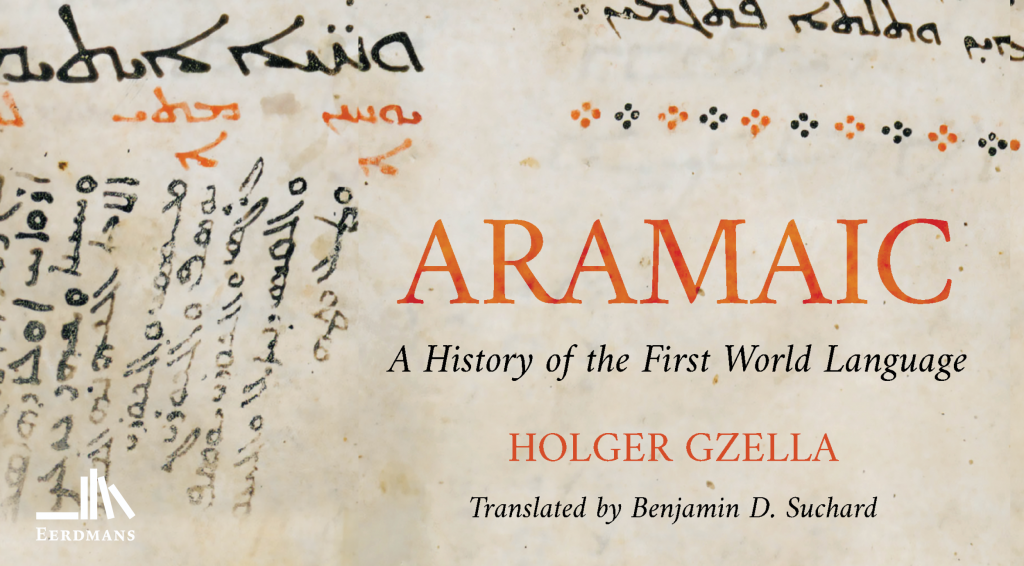
It is also noteworthy that, during the Arsacid times, several buffer-states were formed between the eastern borders of the Roman Empire and the western frontiers of Parthia: Osrhoene, Sophene, Zabdicene, Adiabene, Hatra, Characene, Elymais, Gerrha (the illustrious port of call and major trade center of the Persian Gulf that rivaled with Alexandria in the Mediterranean), the Nabataean kingdom, and the short-lived but most formidable Tadmor (Palmyra). This situation favored the world trade between East and West, as well as North and South. General info:
https://en.wikipedia.org/wiki/Osroene
https://en.wikipedia.org/wiki/Sophene
https://en.wikipedia.org/wiki/Zabdicene
https://en.wikipedia.org/wiki/Adiabene
https://en.wikipedia.org/wiki/Hatra
https://en.wikipedia.org/wiki/Nabataean_Kingdom
https://en.wikipedia.org/wiki/Characene
https://en.wikipedia.org/wiki/Elymais
https://en.wikipedia.org/wiki/Palmyrene_Empire
The great rivalry and ferocious antagonism between the Romans (and later the Eastern Romans) and the Iranians after the rise of the Sassanid dynasty (224 CE) did not affect in anything the good relations and the trade among Egyptians, Aramaeans, and Iranians; there were numerous Aramaean populations in both empires, so, we feel safe to conclude that any products from lands north of Caucasus mountains and north of Iran were transported by Aramaeans via Palestine or Nabataea to Egypt.

Aramaic inscription from Hatra, NW Iraq
There have been additional reasons for the good feelings of the Egyptians toward the Iranians, and they were of religious nature. The Christological disputes generated enmity and great animosity between
a) the Copts (: Egyptians) and the Aramaeans, who adopted Miaphysitism (also known as Monophysitism), and
b) the Eastern Romans and the Western Romans, who thought they preserved the correct faith (Orthodoxy).
One has to bear always in mind, that in order to define themselves, the so-called Monophysites (also known more recently as ‘Miaphysites’) used exactly the same term (i.e. ‘Orthodox’), which means that they considered the Eastern Romans and the Western Romans as heretics. The patriarchates of Antioch, Alexandria and Jerusalem were split. Atop of it, other Aramaeans (mostly in Mesopotamia and Iran) accepted the preaching of Nestorius, Patriarch of Constantinople, who was also deposed as a heretic (in August 431). For the aforementioned religious reasons, the Eastern Roman armies were most loathed in Syria, Palestine, North Mesopotamia (today’s SE Turkey), and Egypt as oppressors. About:
https://en.wikipedia.org/wiki/Monophysitism
https://en.wikipedia.org/wiki/Nestorius
https://en.wikipedia.org/wiki/Nestorianism
In addition, one has to take into consideration the fact that the Jews, who inhabited the eastern provinces of the Roman (and later the Eastern Roman) Empire, were also pro-Iranian and they expected that the Iranians would liberate them one day from the Roman yoke pretty much like the Achaemenid Iranian Emperor Cyrus delivered their exiled ancestors from the tyranny of Nabonid Babylonia (539 BCE).
The Axumite Abyssinian invasion of Yemen (ca. 530 CE; in coordination with the Roman Emperor Justinian I), the ensued Iranian-Axumite wars, the Iranian invasion of Yemen (570 CE; known as the Year of the Elephant among the Arabs of Hejaz), and the incessant battles and wars between the Eastern Roman and the Sassanid Iranian armies were closely watched by all populations in Egypt. The third Iranian conquest of Egypt (618 CE) was a matter of great jubilation for Copts and Jews; Egypt was annexed to Iran for ten (10 years), before being under Eastern Roman control again for fourteen years (628-642 CE) and then invaded by the Islamic armies. General info:
https://en.wikipedia.org/wiki/Aksumite%E2%80%93Persian_wars
https://en.wikipedia.org/wiki/Byzantine%E2%80%93Sasanian_War_of_572%E2%80%93591
https://en.wikipedia.org/wiki/Byzantine%E2%80%93Sasanian_War_of_602%E2%80%93628
https://en.wikipedia.org/wiki/Sasanian_conquest_of_Egypt
https://en.wikipedia.org/wiki/Khuzistan_Chronicle
https://en.wikipedia.org/wiki/Sasanian_Egypt
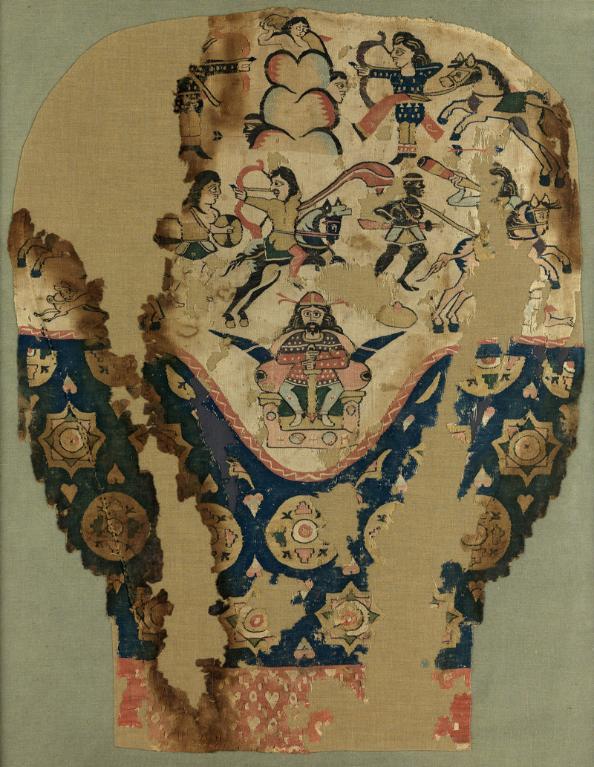
Iranian Emperor Khosrow (Chosroes) I Anushirvan on Coptic textile fragment
Indicative of the good Egyptian feelings for the Sassanid emperors and Iran is a tapestry weave found by Albert Gayet in his 1908 excavations in Antinoe (also known as Antinoöpolis, i.e. the town of Sheikh Ibada in today’s Egypt); this is a textile fragment of legging that dates back to the late 6th and early 7th c. (Musée des Tissus, in Lyon-France; MT 28928). It features the scene of an unequal battle that has been identified as one of the engagements between the Sassanid and the Axumite armies in Yemen; Iranian horse-archers are depicted at the moment of their triumph over Abyssinian infantry opponents, who appear to be armed with stones. In the very center of the scene, an enthroned figure was often identified with the great Iranian Emperor Khosrow (Chosroes) I Anushirvan (Middle Persian: Anoshag ruwan: ‘with Immortal Soul’), who was for Sassanid Iran as historically important as Justinian I, his early rival and subsequent peace partner, for the Roman Empire. About:
http://warfare.6te.net/6-10/Coptic-Textile-Battle-Tissus.htm
https://en.wikipedia.org/wiki/Antino%C3%B6polis
https://en.wikipedia.org/wiki/Khosrow_I
This was the wider historical context at the time of the arrival of the first Bulgarian exports to the Sassanid Empire of Iran, the Eastern Roman Empire, and Egypt more specifically. And the Bulgarian cloaks, as mentioned in Maurice’s Strategicon, make every researcher rather think of heavy winter cloaks, which were apparently not necessary for the Eastern Roman soldiers, who had to usually fight in less harsh climatological conditions. It is possible that those heavy cloaks were eventually used by the Iranian army when engaged in the Caucasus region, and thence they were noticed by the Eastern Romans.
With these points, I complete my philological and historical comments on the topic. However, the entire issue has to be also contextualized at the academic-educational level, so that you don’t find it bizarre that not one average Bulgarian knew about the topic before the inquisitive blogger wrote his article and the YouTuber uploaded his brief video.
VIII. Academic context and the Western falsehood of a Euro-centric World History
This part does not concern the Fayoum papyri and the Strategicon of Emperor Maurice; it has to do with what non-specialists, the average public, and various unspecialized explorers do not know at all.
This issue pertains to
i- the conceptualization of World History;
ii- the contextualization of every single document newly found here and there;
iii- the stages of historical falsification that were undertaken over the past 500 years;
iv- the forgers themselves and their antiquity, and last but not least; and
v- several points of
a) governance of modern states,
b) international alliances, and
c) the ensuing captivity of all the targeted nations, each one well-adjusted into the preconceived role that the forgers invented for it.
As you can guess, one can write an encyclopedia on these topics, so I will be very brief. Attention: only at the end, you will understand that all these parameters fully precondition the topic that we already discussed, and any other that we have not yet discussed, because simply it does not exist as a standalone entity but as a fact entirely conditioned by what I herewith describe in short.
What I want to say is this: if tomorrow another Fayoum discovery brings to light a 3rd c. BCE papyrus with the mention of something Bulgarian (Voulgarikon), this will not affect in anything the prevailing conditions of the so-called academic scholarship. In other words, do not imagine that with tiny shreds of truth unveiled here and there, you are going to change anything in the excruciatingly false manner World History was written.
i- the conceptualization of World History
It may come as a nasty surprise to you, but what we know now about History is not the conclusion or the outcome of additional discoveries made one after the other over the past 400-500 years. Contrarily, it was first preconceived, when people had truly minimal knowledge of the past, and after they had forged thousands of documents and manuscripts for at least 500-600 years, long before the early historiographical efforts were undertaken during the Renaissance.
After they destroyed, concealed and rewrote tons of manuscripts of Ancient Greek and Roman historiography from ca. 750 CE until 1500 CE, Western European monks and editors, philosophers and intellectuals, popes, scientists and alchemists started propagating their world view about the assumingly glorious past of their supposedly Greek and Roman ancestors – a nonexistent past that the Renaissance people were deliberately fooled enough to believe that they had lost and they had to rediscover it. In fact, all the discoveries made afterwards, all the decipherments of numerous ancient writings, and all the studies of original material from Mesopotamia, Egypt, North Africa, Caucasus, Central Asia, China and India was duly processed and adjusted in a way not to damage or challenge in anything the preconceived scheme which was named ‘World History’ by the vicious and criminal Western European forgers.
This means that you should never expect ‘new discoveries’ to challenge the officially established dogma of the Western academia; it is not about Bulgars and the past of today’s Bulgarians, Thracians, Macedonians, etc., etc., etc. It is about all. What type of position the Bulgarians, the Russians, the Turks, the Iranians, the Egyptians and all the rest occupy in today’s distorted historiography had been decided upon long before the establishment of the modern states that bear those names.
ii- the contextualization of every single document newly found here and there
Any finding unearthed by anyone anytime anywhere means nothing in itself; this concerns every historiographer, truthful or dishonest. What truly matters for all is contextualization. It so did for the original forgers. Theirs was an arbitrary attempt; they contextualized the so-called ‘Ancient Greece’ in a way that would have been fully unacceptable, blasphemous and abominable for the outright majority of all the South Balkan populations during the 23 centuries prior to the foundation of Constantinople by Constantine the Great.
It was peremptory, partial and biased; according to the fallacious narratives of the forgers, centuries were shrunk and shortened in order to fit into few lines; moreover the schemers stretched geographical terms at will; they did not use various terms, which were widely employed in the Antiquity; they passed important persons under silence, while exaggerating the presentation of unimportant ones. This is what contextualization was for the forgers: they applied a Latin recapitulative name (Graeci) to a variety of nations, which never used this Latin term or any other recapitulative term for them; they applied a non-Ionian, non-Achaean, and non-Aeolian term (Hellenes) to them and to others; and after the decipherment of many Oriental languages, they did not rectify their preposterous mistakes, although they learned quite well that the two fake terms about those populations (Graecus and Hellene) did not exist in any other language of highly civilized nations (Egyptian, Assyrian, Babylonian, Hittite, Hurrian, Canaanite, Phoenician, Aramaic, Hebrew, Old Achaemenid Iranian).
Consequently, every other information, data and documentation pertaining to any elements of the said context was concealed, distorted or misinterpreted in order to be duly adjusted to the biased context that had been elaborated first.
iii- the stages of historical falsification that were undertaken over the past 500 years
Following the aforementioned situation, many dimensions of historical falsification were carried out and can actually be noticed by researchers, explorers, investigators and astute observers. The ‘barbarian invasions’ (or Migration Period) is only one of them; I mention it first because it concerns the Bulgars. Long before distorting the History of Great Old Bulgaria and that of Volga Bulgaria systematically, Western historical forgers portrayed Bulgars and many other highly civilized nations as barbarians. Why?
Because the historical forgers of the Western World hate nomads! This is an irrevocable trait of them; that’s why they fabricated the fake term ‘civilization’ in their absurd manner: originating from the Latin word ‘civitas’, the worthless and racist term ‘civilization’ implies that you cannot be ‘civilized’ unless you are urban. This monstrous and unacceptable fact reveals the rotten roots of the hideous, vulgar, sick and villainous Western world and colonial academia.
In the Orient, there was never a cultural divide between urban populations and nomads; some nomadic tribes were considered as barbarians; that’s true. But also settled populations and urban inhabitants were also considered as barbarians (like the Elamites, who were considered as inhuman by the Assyrians). The rule was that the settled nations were nomads in earlier periods. But the status of a society was irrelevant of the consideration and the esteem (or lack thereof) that others had about a certain nation. This started with the Romans and their interpretation of the South Balkan, Anatolian, and Cretan past. It was then re-utilized and modified by Western Europeans. To some extent, the papal approval was tantamount to acquisition of credentials and to promotion to ‘civilized nation status’. Actually, this is today the nucleus of the whole problem concerning Ukraine.
That is why the so-called Migration Period was so terribly distorted by Western historians. Western historians deliberately preferred to stay blind and not to study the Ancient Mongol chronicles (notably the Secret History of The Mongols) in order to avoid assessing the Mongol-Turanian standards and principles of civilization. Had they proceeded in the opposite way, they would have discovered that, for the nomads, it is the settled people and the urban populations, who are barbarians, decayed and shameful.
The truth about the fallacious term ‘Migration Period’ is simple: there was never a migration period before 1500 CE (and certainly none afterwards), because every century was actually a migration period. Human History is a history of migrations.
The distorted linguistic-ethnographic division of the migrant nations helped forgers to dramatically increase the confusion level; as a matter of fact, there was no proper ethnic division (in the modern sense of the term) among Mongols, Turanians, Slavs and several other migrant nations. The languages change when people migrate and settle, resettle, move again, and end up in faraway places. For Muslim historians, the khan of the Saqaliba (: Slavs) was the strongest of all Turanian rulers. The arbitrary distinction of the migrant nations into two groups, namely Indo-European and Ural-Altaic/Turco-Mongolian nations was done deliberately in order to intentionally transform the face of the world and adjust it to the so-called Table of Nations, a forged text that made its way into the biblical book of Genesis in later periods (6th–4th c. BCE). General reading:
https://en.wikipedia.org/wiki/Ibn_Khordadbeh
https://en.wikipedia.org/wiki/Book_of_Roads_and_Kingdoms_(Ibn_Khordadbeh)
https://en.wikipedia.org/wiki/Saqaliba
https://en.wikipedia.org/wiki/Route_from_the_Varangians_to_the_Greeks
The Western academic tyranny is so deeply rooted that, irrespective of your political, ideological or philosophical affiliation (fascist, Nazi, communist, conservative, social-democrat, liberal, atheist, evolutionist, creationist, anarchist, etc.), you always have to adjust your seminars, courses, lectures, contributions, books and publications to the fallacy of Genesis chapter 10. The absurd logic of this system is the following: “since no Bulgars are mentioned in the Table of Nations, they must be a later tribe”. Then, believe it or not, whatever documentation may be found in Aramaic, Middle Persian, Pahlavi, Brahmi, Kharosthi, Avestan, Sogdian, Tocharian, Chinese or other texts about the Bulgars will be deliberately presented as irrelevant to Bulgars. If a new Sogdian document is found in Central Asia (dating back to the middle Arsacid times: 1st c. CE) and there is a certain mention of Bulgars in the text, the criminal gangsters and the systematic fraudsters of the Western universities and museums will write an enormous amount of articles to stupidly discredit the document or attribute the word to anything or anyone else.
iv- the forgers themselves and their antiquity
The above makes it clear that the foundations of today’s Western academic life, historiographical research, sector of Humanities, and all the associated fields of study were laid by the Western European Catholic monks and only after the end of the Eastern Roman imperial control, appointment and approval of the Roman popes (752 CE).
This changes totally the idea that you and the entire world have of the History of Mankind because it means that the Benedictine-Papal-Roman opposition to and clash with the Eastern Roman Empire (and the subsequent schisms of 867 and 1054) were entirely due to the resolute papal attempt to forge the World History, to substitute it with a fake History, and to diffuse all the Anti-Christian schemes that brought the world to today’s chaos. As the Muslims were totally unaware of the confrontation, the Crusades were undertaken against (not the Caliphate but) Constantinople. All the Christian Orthodox monasteries and libraries were controlled by Catholic monks, scribes, copyists and priests who had the time (from 1204 until 1261) to rob whatever manuscripts they had to rob, destroy whatever manuscripts they had to destroy, and leave all the rest as ‘useless’ to their enterprise.
That is why modern scholars are ordered to jubilate every time a papyrus fragment is found in Egypt with few lines of verses from Homer, Hesiod and the Ancient ‘Greek’ tragedians, historians or philosophers! They publicize these discoveries in order to make every naïve guy believe that the bulk of their forged documentation is genuine. But it is not.
v- and last but not least, several points of
a) governance of modern states
The consolidation of the historical forgery was top concern for the colonial puppets of the Western European powers and for the powers hidden behind the scenes. I still remember the blogger’s comments about the late 19th and early 20th c. Bulgarian statesmen, politicians and academics, who were not so enthusiastic about the Fayoum papyrus! He made me laugh at; of course, he was very correct in writing what he did. Absolutely pertinent! But also very naïve!
He failed to remember that the top Ottoman military officer in Salonica during the First Balkan War, lieutenant general Hasan Tahsin Pasha (also known as Hasan Tahsin Mesarea; 1845-1918), as soon as he learned that the 7th Bulgarian Division was coming from the northeast, decided on his own to surrender the Salonica fortress and 26000 men to the Greek crown prince Constantine, being thus deemed a traitor and sentenced to death by a martial court.
No Bulgarian (or other) official had ever the authority to go beyond the limits specified as regards either borderlines or historical approaches and conclusions.
b) international alliances, and
The same is valid today; it would be bizarre for Bulgarian professors of universities and academics to teach, diffuse, publish and propagate ideas, concepts and interpretations that contravene the worldwide norm that the Western colonials imposed across the Earth. It is as simple as that: Bulgaria, as EU member state, participates in many academic projects like Erasmus, etc. The professor, who would challenge the lies and the falsehood, which are at the basis of the so-called European values, principles and standards, would automatically become a problem for his rector, who would be receiving most unpleasant if not threatening calls from every corner of the Earth, as well as demands to fire the uncooperative, ‘controversial’ professor.
c) the ensuing captivity of all the targeted nations, each one well-adjusted into the preconceived role that the forgers invented for it
Actually, it is not a matter of Bulgaria and how the true History of Bulgaria is hidden from the Bulgarians; the same is valid in Egypt, Iraq, Turkey, Iran, Sudan, Israel, Tajikistan, Kazakhstan, etc. As I lived in all these countries, I have personal experience and deep knowledge as regards their pedagogical systems and the contents of their manuals. In Egypt, schoolchildren study the History of Ancient Egypt down to Ramses III only (ca. 1200 BCE) and next year, they start with the beginning of Islam (642 CE). Why?
Because during the falsely called Roman times, Egyptian mysticisms, religions, spirituality, cults, sciences, arts, wisdom, cosmogony, cosmology, and eschatology flooded Greece, Rome, the Roman Empire, and even Europe beyond the Roman borders. The Egyptian pupil must not learn that the Greeks, the Romans, and the Europeans were dramatically inferior to his own cultural heritage. That’s why stupid and illiterate sheikhs, ignorant imams, and evil theologians intoxicate the average Egyptians with today’s fake Islam, which is not a religion anymore but a theological-ideological-political system at the antipodes of the true historical Islam. It cuts the average Egyptian from his own cultural heritage, thus making him stupidly care about the wives and the prematurely dead children of prophet Muhammad, as well as other matters of no importance for the spiritual-cultural-intellectual phenomenon of Islam.
Best regards,
Shamsaddin
—————————————–
Download the article (text only) in PDF:
Download the article (with pictures and legends) in PDF:


























































































